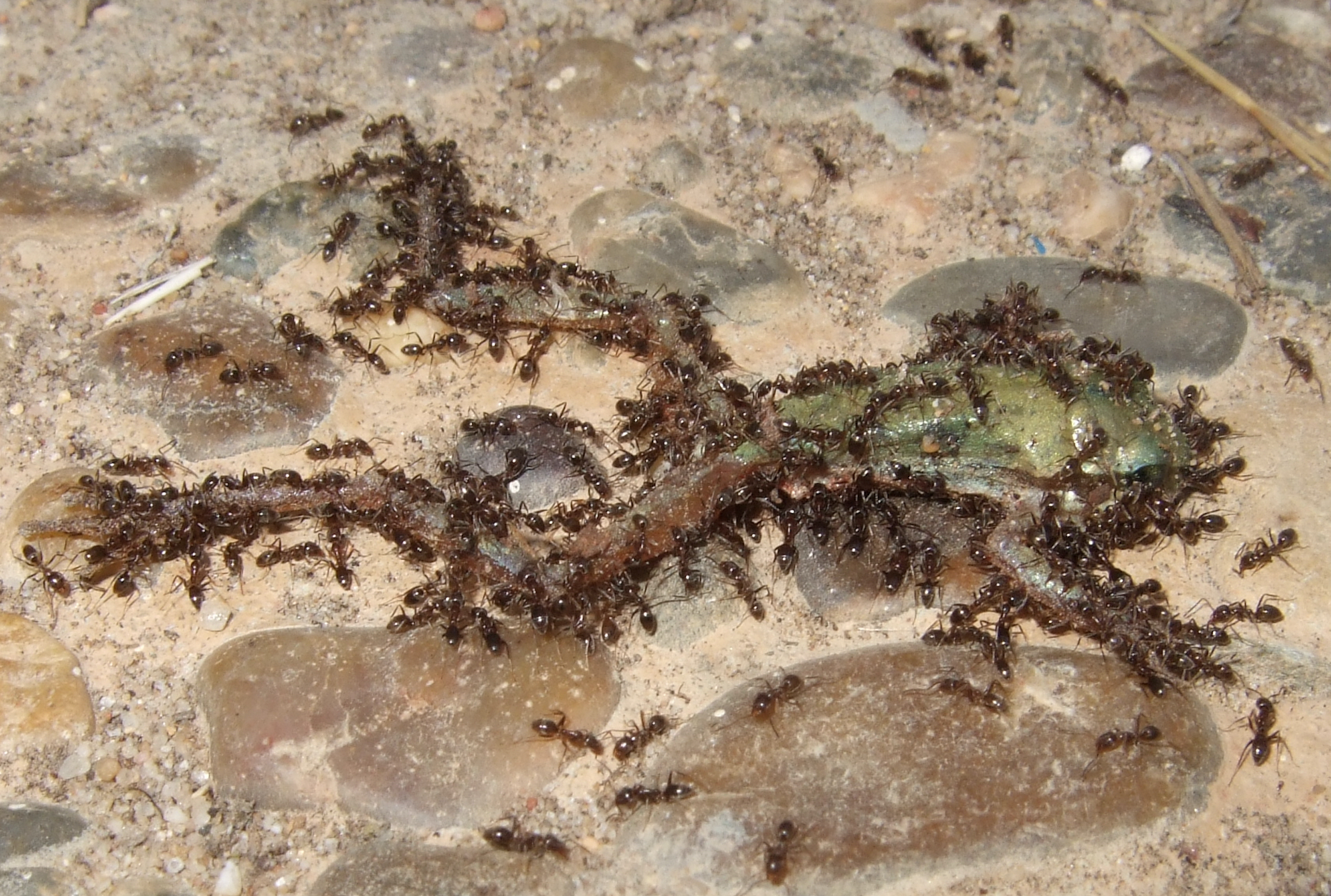Invasive ants are amongst the most destructive species across the world. They can strongly alter ecosystems and are responsible for the loss of native ant species, but they can also lead to substantial economic costs. An international study led by the Spanish National Research Council estimated the total annual costs which total, at least, 46.000 million euros since 1930 and have mainly impacted the agriculture and public health sectors. The researchers compiled these data from the InvaCost database, the first compilation of economic costs associated with biological invasions worldwide. The research work, published in the journal Biological Invasions, was carried out in collaboration with researchers from Australia, France, Morocco, Italy, the Czech Republic, India, Kuwait, and Japan.
"As invaders, ants can be extremely dangerous for the public health and livestock. Furthermore, their biological and ecological characteristic, super-colonial structure, high reproducibility, and strong ability to monopolize environmental resources make them especially harmful for crops too", explains Elena Angulo, s researcher at the Doñana Biological Station – CSIC and leader of the study. "Moreover, their small size makes them difficult to detect, which favors their easy transport by humans and their spread out of their native habitats".
Ant invasions can seriously alter ecosystems by modifying trophic web dynamics, altering nutrient cycling, or decreasing pollination. Additionally, they also affect human assets: they have an impact on agricultural production, damage infrastructures, or risk public health. For instance, the little fire ant, Wasmannia auropunctata, has a painful sting and tends to sap-sucking insects, resulting in plantations being completely abandoned. The Singapore ant, Trichomyrmex destructor, is also known as the destructive trailing ant for its capacity to induce substantial economic losses, particularly due to damages to electrical equipment when they chew through wires.
Twelve invasive ant species studied
The researchers, with the information collected in Invacost, have focused on analyzing the data related to 12 of the 19 ant species identified as invasive by the IUCN (the International Union for Conservation of Nature). From the 46,000 million euros of estimated costs, 9,400 million were associated with management or damage loss. The rest of the costs were classified as "potential" since they were predicted to occur beyond the original spatial observation range (for instance, predicted costs in invaded areas where there is no data) and temporal (for instance, to predict future costs). A large part of costs is associated with two species due to their stings: Solenopsis invicta (the red imported fire ant) and Wasmannia auropunctata (the little red fire). These costs were concentrated in two countries, Australia and the United States.
The team has also highlighted how the costs of invasion management are much lower than those associated with damage loss. Besides, most of these costs were primarily post-invasion management, with much lower amounts dedicated to prevention measures, such as early detection.
Underestimated costs
Until now, reports on economic costs have been mainly restricted to evaluating the costs to control invasions, except for the cost associated with some invasive ant species with big impacts, such as the red fire ant. The researchers wanted to estimate the total economic impact, "which could increase the visibility of this problem and, in turn, raise awareness among managers and practitioners of its seriousness, in particular, of the current threat they represent towards biodiversity", says Angulo.
For example, the few data on the costs of invasive ants in Spain are based on research costs on the ants invading the Canary Island and control costs on private properties of the garden ant, Lasius niger. However, Elena Angulo says that "there are many more research costs that have not been accounted for because the administrations do not report them and thereis also much more damage to private properties". The team has also not been able to access the costs at customs, where shipments are checked to detect and eliminate the entry of invaders. Ants that cause damage to public health, such as fire ants, have not yet spread across Spain.
This study suggests that the global costs of invasive ants are huge but largely biased in favor of countries leading biological invasions, with a large proportion of unreported and underestimated costs in many other countries", adds researcher Elena Angulo. "A better collaboration between managers, practitioners and researchers is crucial for knowing the actual impact of these invasions and improving management actions of invasive ants".
--------------
Referencia
Elena Angulo, Benjamin D. Hoffmann, Liliana Ballesteros-Mejia, Ahmed Taheri, Paride Balzani, Alok Bang, David Renault, Marion Cordonnier, Céline Bellard, Christophe Diagne, Danish A. Ahmed, Yuya Watari & Franck Courchamp. Economic costs of invasive alien ants worldwide. Biological Invasions. DOI: 10.1007/s10530-022-02791-w









 ¡Abierta convocatoria para proyectos de investigación en la ICTS- Doñana!
¡Abierta convocatoria para proyectos de investigación en la ICTS- Doñana!


